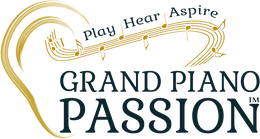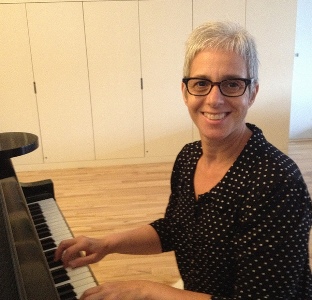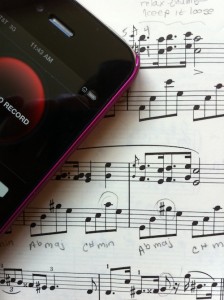I have never been one to do anything slowly. I entered high school at age 12, college at 16, and was a vice president in a male-dominated industry at 30. That is, until I studied Haydn.
Ten years after embarking on weekly piano lessons as an adult beginner, I felt ready to tackle a complete sonata. My competitive temperament was frustrated with learning shorter pieces, and I wasn’t going to be satisfied with studying just one movement.
My piano teacher, Denise Kahn, selected Haydn’s Sonata in F Major, Hoboken XVI: 23, pointing out the expressive second movement. What I hadn’t anticipated was the sheer difficulty of the first movement. Starting at the bottom of the first page and continuing throughout the development and recapitulation, dense waves of black notes and stems filled the creamy paper. This was an out-and-out roller coaster ride, spiked with 32nd notes.
With the same drive I had used in my career, I plowed right in, attacking the first movement from start to finish. Scattered throughout was an even mixture of 8th, 16th, and 32nd notes, and the occasional breather of a quarter note. Yet I recklessly launched into the measures, disregarding the changing rhythms.
“Slow down,” Denise cautioned at my lesson. “Practice as slowly as you possibly can, and then slow it down even more.”
For years, Denise had patiently coached me on the merits of slow practice. Yet, I had never listened to authority figures before, so why should I start now?
“Breathe, take your time,” Denise repeated each week. “You can count all you want, but the goal is to relax, hear the music, and let it flow from your ear, through your body, into your fingers, and then into sound.”
Is she kidding, I thought? I didn’t want to slow down; I meant to push ahead as fast as I could. There were centuries of music waiting to be learned, and time was not on my side.
It wasn’t until I completed the second and third movements that I realized I had been playing the first one in the wrong way. Clearly, I had not been listening at all. The Adagio and Presto sections only made sense in relation to the frisky, light-hearted mood of the first movement. Unwittingly, I was slowing the tempo to accommodate the 32nd notes.
I tried the first movement again, and I felt my fingers lock with tension. I realized I was anticipating the 32nd notes, which did not proliferate until 21 measures into the music. Not only wasn’t I breathing, my body was taut with anxiety.
In the back of my mind, I could hear Denise speaking, “By practicing slowly, at a consistent tempo, you will actually hear the music.”
What a concept! It had only taken me 10 years to hear her.
I began again, this time setting the metronome at the slowest possible speed, practicing three measures at a time before moving on. In spite of all my previous accomplishments, I had never persevered in quite this way. By practicing slowly, I was able to relax my arm and place my hand on groups of notes with ample time to shift to the next group. In this manner I finally started to grasp the lively rhythm. Eventually, my fingers flew up and down the keyboard.
I began to understand that I could practice this sonata for the next five years, playing it well, but never quite finish it. The magic of playing the piano is that the finish line doesn’t exist. There’s always another layer of understanding and interpretation. Very slowly, I was peeling off the outer layer and absorbing Haydn into my heart.





I love your story on learning a Haydn Sonata. I am currently learning my first Haydn Sonata, the C Major Hob XI:35. My tendency is to rush rush rush, but my teacher told me to first practice it very slowly, more slowly than slow, listen and feel it. Starting off practing slow like that really does help get the feel for the melody as well as the right technique. My teacher also suggested I practice with my eyes closed as that would help me hear and feel the music better and gain confidence that I really know what my hands and brain are supposed to be doing. It is not a race, no rush, just take my time and I will get there.
Janice Rosen
Washington, DC
Thank you for the comments, Janice. I think closing your eyes would be a great idea to learn a new piece of music. That’s a beautiful Sonata, there are so many. I wish they didn’t take so long to learn! I am now working on a Mozart Sonata and I am moving at a snail’s pace, but I find that I’m absorbing the music on a much deeper level as I go forward. Good luck and thank you again for your kind comments.
Best,
Robin